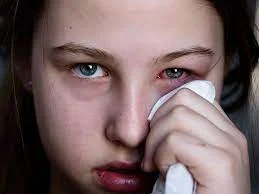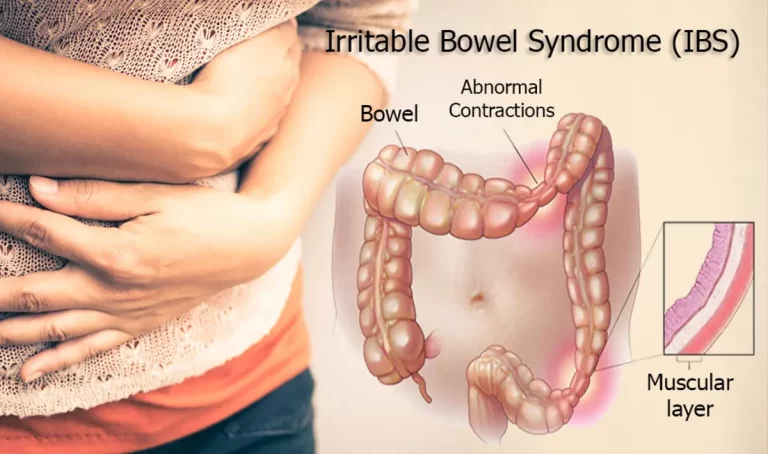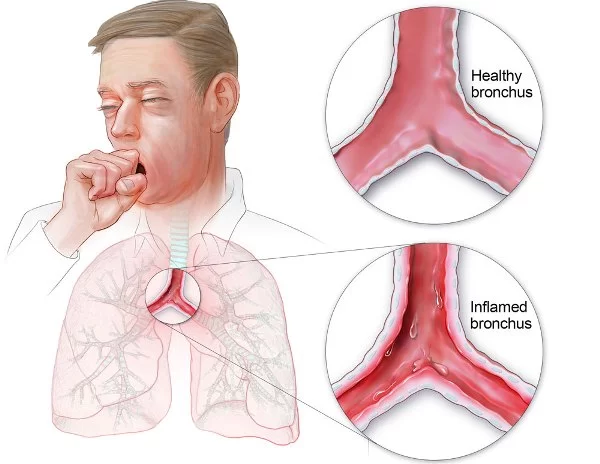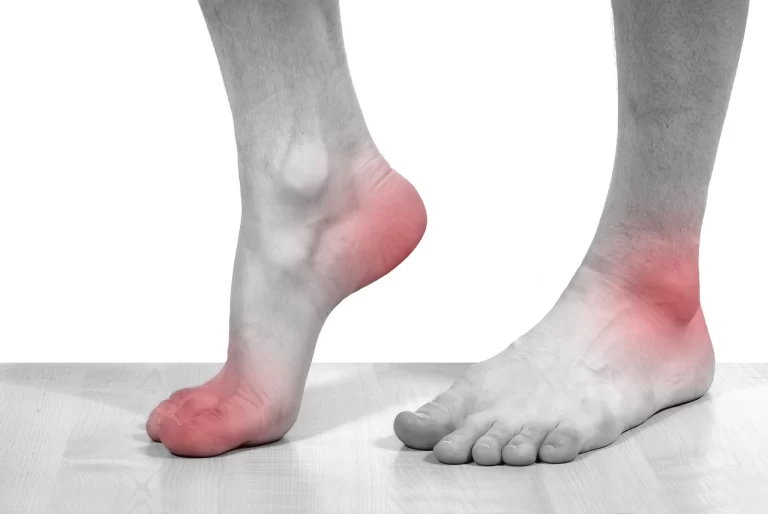Conjunctivitis Self-Care
Introduction
Conjunctivitis is an eye condition that arises from infections, characterized by pins and needles, swelling, excessive tear production, and the discharge of thick mucus or pus from the eyes. One of the most prevalent eye conditions, conjunctivitis, also known as pink eye, affects both men and women equally but primarily affects young people.
Everybody has conjunctivitis at some point in their lives. It is possible for one man to become infected with this disease from another. A few home treatments and tips can help treat conjunctivitis.
Redness and inflammation of the eyes are said to be the most prevalent eye conditions. Conjunctivitis, or inflammation of the “conjunctiva,” the thin, clear tissue that covers the white portion of the eyeball and lines the inner eyelids, is a common cause of vision issues.
What is Conjunctivitis?
One of the most common and contagious eye conditions, conjunctivitis, also referred to as pink eyes, causes swelling and prickling pain in the eyes. Although it can affect both eyes, conjunctivitis typically affects one eye more than the other. Allergy, viral infection, and bacterial infection can all cause conjunctivitis. Because conjunctivitis slightly impairs vision, it can become a serious issue. When someone has conjunctivitis, they produce a lot of tears and thick mucus.
An infection or an allergy can result in conjunctivitis, an eye disease. Without therapy, it normally improves in a few weeks.
Verify whether you have conjunctivitis.
Another name for conjunctivitis is pink or red eye.
Usually, it affects both eyes, causing them to:
- Red
- Burn or feel gritty
- Produce pus that sticks to lashes
- Itch
- Water
Types of conjunctivitis-
Conjunctivitis primarily comes in three forms, which are listed below:
Viral Conjunctivitis:
Colds, the flu, and other respiratory infections are the primary cause of viral conjunctivitis. Usually affecting one eye, viral conjunctivitis can spread to the other in a matter of days. More tears are discharged from the eye than usual when conjunctivitis is viral.
Contagious viral conjunctivitis is caused by a virus. Occasionally, it is accompanied by symptoms of the flu or cold. A few symptoms are:
- Red, sore, watery, or gritty eyes
- Itchy and swollen eyes
- Crusty eyelids
Bacterial Conjunctivitis:
Many variables may result in bacterial infection. An ear infection is one of the most frequent causes of bacterial conjunctivitis. When waking up in the morning, thick mucus from the eyes caused by bacterial conjunctivitis sticks to the eyelids.
Bacteria cause bacterial conjunctivitis, which is highly contagious and frequently affects other family members. One eye may be affected before the other and symptoms may begin suddenly. These symptoms include:
- Enlargement of the eyelid
- Puffy eyelids and red, burning, sore, or gritty eyes
- May have a yellow discharge coming from your eyes, or your eyes may be stuck together when you wake up.
- Additional symptoms are typically absent in cases of bacterial conjunctivitis.
Allergic Conjunctivitis:
Allergic conjunctivitis occurs due to allergy, this category of conjunctivitis commonly affects both the eyes, and painting, itching, irritation, and burning are the common signs of allergic conjunctivitis,
Triggers for allergic conjunctivitis typically include pollen, dust mites, pet dander (animal hair and dead skin cells), cosmetics, and preservatives in eye drops. Symptoms include:
- Red, swollen, burning, itchy, and burning eyes
- Black pouches beneath the eyes
- Moist eyes
- Exposure to light
- Additional allergy symptoms, like runny or blocked noses and sneezing
What causes conjunctivitis?
The following list contains the main causes of conjunctivitis:
- Viral infection
- Allergic reaction
- Exposure to chemicals
- Bacteria
- Environmental pollution
- Air pollution both indoors and outdoors, including dust pollution
- Irritants
- Wearing contact lens
- In contact with some infected person
What are the common symptoms of conjunctivitis?
The following list includes the main signs and symptoms of conjunctivitis:
- Pink or reddish color in the white part of eye or eyes
- Conjunctiva swells
- Extra production of tears
- Thick discharge of mucus from the eye or eyes
- Pricking pain in eyes
- Eyelids don’t open in a typical manner
- Itching and irritation
- Burning eyes
- Crusting eyes in the morning
Diagnosis
Your doctor can typically diagnose pink eye by looking at your eyes, asking about your recent health history, and evaluating your symptoms
In rare cases, your healthcare professional might remove a sample of the fluid that drains from your eye—known as a culture—for study in the lab. If you have severe symptoms or your doctor detects a high-risk cause, like these, a culture might be necessary.
- A foreign body in your eye.
- A dangerous bacterial infection.
- An infection spread by sex.
Treatment
Regardless of the underlying cause, ophthalmologists frequently recommend at-home treatments for conjunctivitis to lessen discomfort and prevent a recurrence. It might be suggested to use these therapies on their own or in addition to medications.
Ophthalmologists may advise using a warm or cold compress—a moist washcloth or hand towel—to your closed eyelids three or four times a day to ease the discomfort caused by bacterial, viral, or allergic conjunctivitis.
While cold compresses serve to ease itching and inflammation, warm compresses aid in lessening the crust that forms on your lashes or the sticky discharge that builds up on your eyelids.
You must keep from rubbing your eyes if you have allergic conjunctivitis because doing so may worsen your symptoms.
To lessen the chance of the illness spreading from one affected eye to the other, do not touch the second eye with the same cloth if you have conjunctivitis in one.
The majority of conjunctivitis cases resolve on their own, however, there are several at-home self-care methods that can speed up this process. First of all, cleanliness of the eyes is of the utmost importance when conjunctivitis is present. Here are some suggestions for practicing excellent hygiene:
- Take out your contact lenses if you wear them while you have the illness. Use replacement lenses once the conjunctivitis goes away. Make sure the case for your contact lenses has been properly cleaned.
- To stop an infection from arising, getting worse, or spreading, gently remove any discharge from the area surrounding the eye.
- Avoid wearing eye makeup while you have conjunctivitis as this can hinder your healing process. To avoid re-infection, any cosmetics you apply will need to be thrown away, so it’s best to skip makeup for a few days.
- In order
To stop the infection from getting worse or spreading, always remember to wash your hands before and after contacting the affected region.
A pharmacist can help with conjunctivitis
Speak to a pharmacist about conjunctivitis. To aid in alleviating your symptoms, they might provide you with guidance and recommend antihistamines or eyedrops.
Self-care for conjunctivitis
Self-care for conjunctivitis can help relieve your symptoms and prevent the infection from spreading. Here are some tips:
- Wash your hands often. The most crucial action you can take to stop conjunctivitis from spreading is this. Wash your hands with soap and water for at least 20 seconds, especially after touching your eyes or nose.
- Avoid touching your eyes. This will assist in stopping the infection from spreading. Wash your hands right away if you do end up touching your eyes.
- Stimulate your eyes with a warm compress. This may assist in easing pain and lowering inflammation.
- Apply a fresh washcloth that has been soaked in warm water to your closed eyelids for ten to fifteen minutes at a time.
- Apply fake tears. Artificial tears can relieve dryness and lubricate your eyes. Artificial tears are sold over the counter in most pharmacies.
- Do not wear contact lenses. Contact lenses can trap bacteria and viruses, which can make your conjunctivitis worse. Wearing contact lenses should wait until your eyes have healed fully.
- Change your pillowcase and towels daily. This will assist in stopping the illness from spreading. Don’t share washcloths, towels, or other personal goods. This may aid in stopping the infection from spreading.
You can take some actions to assist in reducing your symptoms.
- Use a fresh cotton wool pad (one piece for each eye) to gently wipe away any crusts from your lashes after boiling and letting the water cool.
- For a few minutes, place a cold flannel over your eyes to help them cool.
- Wait until your eyesight improves before wearing contact lenses.
Here are some additional tips for self-care for conjunctivitis:
- Get plenty of rest.
- Drink plenty of fluids.
- Avoid smoking and secondhand smoke.
- Avoid using eye makeup until your eyes are completely healed.
If you have any concerns about your conjunctivitis, please see a doctor.
Treatment of conjunctivitis at home
Commonly occurring conjunctivitis can be caused by germs, viruses, allergies to dust mites or pollen, or irritation from things like chlorinated water or stray eyelashes. Most of the time, this illness is not significant and is easily treated with a variety of self-care methods, herbal treatments, and natural therapies at home.
Home remedies for conjunctivitis
For an effective conjunctivitis treatment, follow the home remedies listed below:
- Ingredients: milk and honey
First step: Boil two cups of milk.
Step 2: Completely mix three tablespoons of honey into the boiling milk.
Instructions: Use the solution as an eyedrop once it has completely cooled. Apply about two drops of this solution to your eye each night before going to sleep. For best results, use this conjunctivitis home remedy.
- Ingredients: Salt and Rosewater
Step 1: Boil about a cup of rose water or distilled water with a quarter teaspoon of salt.
Step 2: Allow it to cool after thoroughly boiling and dissolving all of the salt.
Instructions: For best results, wash your eyes with this water and use this solution as an eyewash. One of the most effective natural treatments for conjunctivitis is this one.
- Ingredients: Honey and water
First step: Pour two tablespoons of honey into a glass of warm water.
Step 2: Thoroughly combine the two ingredients and allow them to cool.
Instructions: Use this honey water to wash your eyes; it relieves eye irritation and minimizes conjunctivitis. Utilize this conjunctivitis home remedy to get rid of the condition.
- Ingredients: Coriander leaves and water
Step 1: Place a few fresh coriander leaves in a glass of water and boil them.
Step 2: Use a sieve to pour the liquid into the glass after it has properly boiled.
Instructions: Wash your eyes with this liquid two to three times a day as an eyewash. Coriander is used in this homemade conjunctivitis remedy because it contains ingredients that are highly effective at treating the condition.
- Ingredients: Potato
Step 1: Cut a potato into several round slices using a fresh, clean potato.
Instructions: Press the potato slice against your eyes to relieve conjunctivitis pain. One of the most popular natural treatments for conjunctivitis and other eye conditions is this one.
- Ingredients: Rosewater
Directions: Often at night, put a few drops of rosewater in your eyes. One of the most effective natural treatments for conjunctivitis is rosewater.
Step 1: Boil two glasses of water with two tablespoons of powdered turmeric.
Step 2: Wait for it to cool down after giving it a good boil.
Instructions: Wash your eyes twice or three times a day with this mixture, using it as an eyewash. One of the best natural treatments for conjunctivitis is this one.
- Ingredients: Coconut oil
Instructions: Apply coconut oil to your fingertips and use them to gently massage your eyelids. To achieve the best results, follow this conjunctivitis home remedy.
8. Ingredients: water and baking soda
Step 1: Add one tablespoon of baking soda to a glass of boiling water.
Step 2: Completely combine the two ingredients and allow to cool.
Instructions: For best results, wash your eyes with this mixture on a regular basis.
- Ingredients: Tea made with chamomile
The relaxing and anti-inflammatory qualities of chamomile tea can help reduce eye strain and irritation. After preparing a cup of chamomile tea and allowing it to cool, soak a fresh washcloth in the tea. Shut your eyes and place the wet washcloth over them for ten to fifteen minutes at a time.
- Aloe vera
Aloe vera’s antibacterial and anti-inflammatory qualities can help conjunctivitis feel better and heal. Put a tiny bit of pure aloe vera gel on your closed eyelids, then rinse it off with cool water after ten to fifteen minutes.
Since the main goal of treatment for pink eye is to provide relief, pink eye remedies are very popular. Whether conjunctivitis is treated with natural medicines or conventional medications, the outcome is essentially the same if the infection is allowed to run its course and therapy is focused solely on symptoms. Home treatments for conjunctivitis are popular because they are less expensive and more gentle. The following are a few of the most widely used home cures and advice for red eye:
That advises applying various home remedies directly to the eyes. Because there is a significant chance of further harming the eyes, we strongly advise against it
In addition to practicing excellent eye care, you can try several at-home remedies to reduce symptoms and expedite healing. The natural remedies we advise using at home are:
Compresses:
To relieve the symptoms of pink eye, apply warm or cold compresses. Warm compresses are often more beneficial for infectious pink eye caused by bacterial or viral infections, while cold compresses are better for allergic conjunctivitis. However, you can experiment with both types of compresses to find which works best for you. Applying compresses to the eyes should aid in reducing irritation and redness. Remember that pink eye can readily spread from one eye to the other and is quite contagious, so don’t use the same compress on both eyes at once.
Hygiene:
Because pink eye produces a lot of weeping and discharge, frequent eye cleaning is required. Make sure you wipe your eyes outward when you clean them. This means that you should clean your eyes starting from the nose and working your way outward. Similar to compresses, don’t reuse wipes or use the same one on both eyes. After washing each eye, make sure to properly wash your hands because the infection might move from one eye to the other.
Boric acid:
Some patients report that boric acid is helpful in treating pink eye, and they have had success using self-treatment. It seems that because of its well-known antibacterial qualities when diluted with water, it produces an excellent eyewash. However, the effectiveness of this treatment is not well established, and care should be taken because the way this medication is handled and the amount of evidence it contains can greatly impact the results.
Goldenseal:
Known for its astringent, antibacterial, and anti-inflammatory qualities, goldenseal is a popular remedy for a number of diseases. Natural health enthusiasts suggest that conjunctivitis can be treated with warm water solutions containing goldenseal; however, there is little evidence to back up any of the many health advantages of goldenseal.
Rose water:
Rose water is essential in most Indian homes and has a significant cultural role in the subcontinent. Traditional Ayurvedic writings state that the solution has anti-inflammatory and anti-infective qualities. The symptoms can be significantly relieved by soaking a cotton swab in cool rose water and applying it to the eyelids, however, these claims have not yet been confirmed.
Potato Peels:
Throughout the world, kitchens use potatoes, or more correctly, roots, more often than any other vegetable, and the peel is nearly always thrown away. However, if you have pink eye, potato peels can be very helpful since they can provide significant relief from the symptoms. They can lessen inflammation, but they won’t help heal the illness. research on the antioxidant qualities of potato peels has been conducted; some of this research has even backed the use of potato peels as a burn wound dressing.
Calendula:
Some natural medicine practitioners suggest that putting calendula ointments in the eyes will help reduce pink eye’s related redness and inflammation. This might be the case given the positive results of studies examining calendula’s effectiveness as a medicinal remedy and the preliminary data indicating that calendula ointment application may help lessen radiation dermatitis during cancer treatment.
Breast Milk:
The majority of mothers say that breast milk is a great remedy for infant eye infections, and pink eye in toddlers is a regular occurrence. Research on the benefits of breast milk has shown that immunoglobulin A, an antibody found in colostrum and breast milk, can prevent cancer as well as eye infections. Numerous leukocytes and different types of immunoglobulins are thought to have this positive effect, particularly in colostrum, which is essentially the first milk produced late in pregnancy. Researchers looking into these health advantages also note that using colostrum has no negative effects when compared to receiving antibiotic therapy.
Honey.
This is most likely among the greatest home treatments for pink eye. Honey has been shown in numerous studies to have healing qualities. Researchers have also discovered that honey includes antibacterial and anti-inflammatory characteristics, which make it an ideal treatment for open wounds and burns. Indeed, honey has been used traditionally to heal wounds since ancient times. It has also been discovered that applying honey topically lowers bacterial activity in the area surrounding the eyes. Due to its powerful antibacterial properties, honey has also been shown in certain studies to be a potential replacement for antibiotic eye drops used to treat bacterial conjunctivitis. Researchers discovered that it shortens healing times in addition to reducing inflammation, redness, and discharge.
Honey is a popular remedy for conjunctivitis, among many other conditions. Our recommendation is to put the water to a boil for five minutes, then allow it to cool until it reaches a touchable temperature. One cup of this water should be combined with a teaspoon of raw honey (or raw Manuka honey, if available), and a cloth or flannel should be soaked in the mixture before being placed over the eyes. Make sure the water is not overheated; it should be warm and comforting rather than painful or even uncomfortable.
Tea bags:
Although excessive tea drinking might have negative effects, tea leaves have a lot of health benefits and are used extensively in traditional Chinese medicine. Tea bags can be soaked in water and used as a compress to treat pink eye. Another simple method is to produce an eyewash using weak or diluted tea. Many of these advantages are now linked to the antibacterial qualities of tea polyphenols and tannin components, which stop the growth of certain bacteria, viruses, and fungi.
To relieve symptoms, apply a compress, either warm or cold, to the afflicted eye. Additionally, the moisture will aid in removing any sticky or crusty discharge that has accumulated overnight, especially first thing in the morning. A cool compress is typically advised for allergic conjunctivitis.
After allowing the bag to cool, cover the affected eye or eyes and enjoy a cup of camomile tea. Once more, this should be cozy and comforting rather than burning or uncomfortable.
To help clear out the eye, use lubricant eye drops a few times a day, or as directed by the manufacturer. The A. Vogel Eye Drops are what we advise.
That advises applying various home remedies directly to the eyes. Because there is a significant chance of further harming the eyes, we strongly advise against it
Guide to managing conjunctivitis at home:
Hand Hygiene
- Frequent Hand washing: Wash your hands thoroughly with soap and water for at least 20 seconds, particularly after touching your eyes or nose. This is important in preventing the transmission of infection.
2. Avoid Touching Eyes: Refrain from touching your eyes to minimize the risk of transferring bacteria or viruses. If you accidentally contact your eyes, wash your hands right away.
Warm Compress
- Soothing Warmth: Apply a warm compress to your affected eye(s) to relieve discomfort and reduce inflammation. Soak a clean washcloth in warm water, wring it out thoroughly, and place it over closed eyelids for 10-15 minutes at a time.
2. Repeat for Relief: Repeat the warm compress application several times a day for optimal comfort.
Artificial Tears
- Lubricating Drops: Use artificial tears to keep your eyes moist and prevent dryness. Choose over-the-counter artificial tears from your local pharmacy.
2. Alleviate Discomfort: Apply artificial tears as needed to soothe irritation and dryness associated with conjunctivitis.
Contact Lens Management
- Avoid Contact Lenses: Refrain from wearing contact lenses until your conjunctivitis has completely healed. Contact lenses can trap bacteria and viruses, exacerbating the infection.
2. Consult an Eye Care Professional: Follow your eye doctor’s instructions regarding the resumption of contact lens wear.
Pillowcase and Towel Hygiene
Regular Changes: Change your pillowcases and towels daily to prevent the spread of infection. Wash them in hot water and let them air dry completely.
Personal Items: Avoid sharing towels, washcloths, and other personal items to minimize the risk of cross-contamination.
Additional Self-Care Measures
- Rest and Recuperation: Get adequate rest to allow your body to recover.
2. Hydration: Drink plenty of fluids to stay hydrated and support your immune system.
3. Smoke Avoidance: Avoid smoking and secondhand smoke, as they can irritate your eyes and worsen symptoms.
4. Humidifier: Use a humidifier to add moisture to the air, especially in dry environments, to soothe irritated eyes.
5. Eye Makeup Restriction: Refrain from using eye makeup until your conjunctivitis has fully resolved. Eye makeup can introduce additional irritants and prolong the infection.
Treatment tip
- If you have an infection in your eyes, such as conjunctivitis, do not wear contact lenses.
- Consult your pharmacist before using certain eye drops with contact lenses.
- One month after opening, discard eye drop bottles; note the date of opening on the bottle (product details may vary; some eye drops have shorter expiration dates).
- Give yourself ten minutes in between eye drop applications if you’re using multiple types.
- Certain eye drops may sting briefly; if this persists, see your pharmacist.
- Wear sunglasses to shield your eyes from the wind and the sun.
- Simple analgesics like paracetamol could help with pain relief. connected to conjunctivitis caused by a virus.
Tips for applying eye drops
- Always remember to wash your hands.
- To create a pocket, first gently pull down your lower eyelid with your index finger. Then, slightly tilt your head back and raise your eyes.
- Squeeze the bottle gently to release one drop into your eye pocket while holding it between your thumb and index finger.
- Never put the dropper tip in your eye.
- Avoid blinking right away as this causes tear ducts to fill with tears instead of leaving the eye.
- To stop the tears from dripping out of your tear duct, close your eyes and lightly press over the corner, close to your nose.
- Give it ten minutes before using any more eye makeup.
- Unless the first drop was applied incorrectly, only one drop should be applied at a time to the affected eye.
Tips for applying eye ointment
- To position the tube tip, place your hand against the base of your nose and hold the tube between your thumb and index finger.
- Put a tiny bit of ointment in the pocket under your lower eyelid.
- Avoid getting the tube tip in your eyes.
Preventative measures
Maintaining proper eye hygiene is something you should do every day, not just when you have conjunctivitis. By doing this, the illness will be stopped before it even arises. Here are our suggestions for avoiding conjunctivitis:
Make sure you routinely clean your case and contact lenses. When inserting or removing lenses, make sure your hands are clean and never wear the same pair of lenses longer than recommended.
Try not to touch or rub your eyes, but if you must for whatever reason, make sure your hands are clean before continuing.
Observe use-by dates, take out your eye makeup before bed, and avoid sharing makeup to improve your makeup hygiene.
To help improve your overall eye health, make dietary improvements.
Use separate hand towels and face towels, and use gloves if necessary to help someone in your home or close to you clean the area around their eye if they have conjunctivitis.
When handling chemicals or swimming in a pool that has been chlorinated, wear safety goggles.
Avoid Contact Lenses
In case your doctor diagnoses you with bacterial or viral conjunctivitis, you might need to wear glasses instead of contact lenses for ten to twelve days, or until the illness clears up.
Rinse Your Eye
Histamine is a chemical that your body releases in response to allergen exposure, which causes eye redness, tears, and itching. Sometimes the discomfort from conjunctivitis caused by mild irritants, such as shampoo or perfume spray, can be reduced by rinsing the eye for at least five minutes with cold or lukewarm water.
Avoid Triggers: Try to avoid the things that you know trigger symptoms of conjunctivitis. If you are prone to allergic conjunctivitis, for example, limit your time outside during high pollen or ragweed levels, or take allergy medications that can help prevent symptoms.
By keeping your windows and doors closed during the greatest amount of pollen season, you can help keep allergens out of your home. At home, take care of any mold and try to prevent dust from collecting.
Conjunctivitis care for child
A frequent eye disease is conjunctivitis, particularly in young children. It is an inflammation of the conjunctiva, the transparent membrane covering the inner surface of the eyelids and the white portion of the eye, characterized by swelling and redness. Because the affected eye appears pink or red, conjunctivitis is sometimes referred to as “pink eye.”
The type of conjunctivitis your child is experiencing will determine how they are treated. It is possible for conjunctivitis to be allergic or infectious. It is quite contagious to have infectious conjunctivitis.
Causes
Infectious conjunctivitis
Highly contagious infections (produced by either bacteria or viruses) can result in conjunctivitis. Infectious conjunctivitis could strike your child if they come into touch with:
- The discharge that an infected person touches, coughs, or sneezes out of their eyes, nose, or throat
- Infected hands or items
- swimming in tainted water or on contaminated towels.
- As long as there is a discharge coming from their eye, a person with infectious conjunctivitis will continue to spread the infection.
- Never let your child share eye drops, tissues, makeup, towels, or pillowcases with others if they have conjunctivitis that spreads to other people. Children who have contagious conjunctivitis should not attend nursery school, kindergarten, or school until their ocular discharge has subsided. To stop the virus from spreading to other people, make sure you give yourself a thorough hand wash.
Allergic conjunctivitis
An allergic reaction might also result in conjunctivitis. Contagious allergic conjunctivitis does not exist. Children with a history of other allergies are more prone to experience it. If your child’s conjunctivitis is due to an allergy, they will likely develop additional symptoms of hay fever. Sneezing, an itchy or runny nose, and watery, irritated eyes can all be symptoms. Kids who suffer from allergic conjunctivitis nearly often wipe their eyes excessively.
Care at home
- Your child may feel better if the symptoms are minor and you clean their eyes gently with cotton balls soaked in warm water.
- Only clean the interior (nose side) of the eye in one way at a time. If one eye is afflicted, this keeps the other eye from getting infected.
- Every time, throw away the cotton ball to avoid cross-contamination.
- Avoid trying to clean inside your eyelids as this could harm your conjunctiva. Artificial tears or other lubricating eye drops may provide some relief.
- Antihistamines may be helpful for allergic conjunctivitis-related sore, irritated, and itchy eyes. Consult your physician or chemist regarding your child’s usage of antihistamines.
- It’s possible that you’ve heard that if a baby’s eyes are sticky or gunky, you can apply breastmilk to them. Although it is safe to use, breastmilk does not cure conjunctivitis and should not be applied topically to your baby’s eyes. You should never use the formula.
When to see a doctor
Take your child to the doctor if, after two days, their conjunctivitis doesn’t get better or if they show any of the following symptoms:
- Severe pain
- Problems with their vision or eyesight
- Increased discomfort, redness, and swelling of the eyelids and surrounding area
- Has a fever and feels unwell overall.
- An ongoing white patch on the cornea, the clear “window” that sits in front of the eye.
To treat bacterial conjunctivitis, your child’s doctor will determine what kind of conjunctivitis your child has and may recommend using antibiotic drops. Treatment for both eyes is necessary, even if it appears that only one of them is diseased. For two days after the end of the discharge, use the drops as usual.
Key points to remember
- Conjunctivitis can be allergic or infectious. It is frequently quite contagious if infected.
- A youngster with contagious conjunctivitis can spread until the discharge from their eyes goes away.
- Youngsters who have infectious conjunctivitis should not attend nursery, kindergarten, or school.
Consult your physician or pharmacist.
If you experience pain in your eyes, are light-sensitive, see color around lights, or have vision problems.
Should just one eye be impacted?
- If your eyes are cloudy or your pupils are shaped strangely
- If your eyes appear to be significantly swollen.
- If there’s a discharge, like pus, in your eyes
- If you experience any additional symptoms, like a rash, headache, or vomiting.
- If after two days your eyes still don’t get better or don’t respond to treatment.
- If the issue has previously developed for you.
- If you believe that an object presented in your eye is the source of the issue.
- If you have shingles, herpes, or a cold sore.
- Certain medications may not be appropriate if you are pregnant or breastfeeding a baby.
- If you take other medications or have additional medical conditions.
- Whether you’re allergic to any medications.
- If contact lenses are your thing.
- Pain in your eyes, or on movement
- Abnormal sensitivity to light
- Anything that prevents you from blinking that affects your vision
- Increasing redness in your eyes
- Discomfort, swelling, or pain in the tissues surrounding the eye
Consult your doctor if:
- Severe Symptoms: Your symptoms are severe or do not improve within a few days.
- Persistent Discomfort: You experience persistent discomfort or pain in your eyes.
- Vision Changes: You notice any changes in your vision.
- High Discharge: You have excessive discharge from your eyes.
- Immune System Concerns: You have an underlying immune system condition that may require medical intervention.
Remember:
Always consult with your doctor if you have any concerns about your health or the management of your conjunctivitis.
If you have any questions about self-care for conjunctivitis, ask your doctor for personalized guidance
What are the complications of conjunctivitis?
Complications of conjunctivitis are mentioned below-
- White spots above the cornea
- Weaken eyesight
- Eye pain
- High and thick eye discharge
- Corneal ulceration
- Dry eye
- Chronic infection
- Stop infectious conjunctivitis from spreading
- You have the ability to prevent the spread of conjunctivitis to other people.
Do
- Wash your hands with warm water.
- Use hot water and detergent to wash your facecloths and pillowcases.
- When you cough, cover your mouth and nose and throw away the used tissues.
- Be cautious not to let it become worse.
- To wipe away the tears and discharge from your eyes, use tissue paper.
- Avoid contacting another eye after handling an infected one.
- Maintain personal hygiene
- Apply rosewater eyedrops.
- Breastmilk drops can also treat conjunctivitis
Don’t
- do not share towels and pillows
- do not rub your eyes
- Don’t take any medicine without consulting
- Staying away from work or school
- Unless you or your child are extremely unwell, you do not need to miss work or school.
How to prevent re-infection
After the healing of your pink eye, it’s important to prevent re-infection. Don’t forget to discard any eye makeup or applicators you used during your conjunctivitis, as well as any disposable contact lenses and solutions you may have used.
Make sure you thoroughly clean your lens casings, glasses, and hard contact lenses as these can all have bacteria.
Conjunctivitis Self-Care: A Path to Relief and Recovery
By implementing these self-care measures, you can effectively manage your conjunctivitis symptoms, prevent the spread of infection, and promote a speedy recovery. Remember, if symptoms worsen or persist, seeking medical attention is essential to ensure proper diagnosis and treatment
Conclusion
With appropriate self-care measures, most cases of conjunctivitis resolve without complications. However, if symptoms worsen or persist, timely medical attention can prevent potential complications and ensure proper treatment.
Conjunctivitis is usually a mild condition that can be treated at home with self-care measures. However, if your symptoms are severe or do not improve within a week or two, see a doctor.
FAQs
Is self-healing conjunctivitis possible?
Antibiotic ointments or drops are typically not necessary for treating pink eye. They don’t lessen your spread or aid in symptom relief. Although it might be challenging to differentiate between bacterial and viral conjunctivitis, both conditions usually resolve on their own.
Can we use a phone when we have conjunctivitis?
Yes, but to help your body recover more quickly, stay at home and rest. Steer clear of eye-demanding video games, films, etc. After using any device, wipe it down, including kitchen appliances, phones, remote controls, etc.
Which medication works the best for conjunctivitis?
NSAIDs, or nonsteroidal anti-inflammatory medicines, lessen irritation, inflammation, and redness. You can get them as eye drops, and your doctor might advise using the drops multiple times a day. They may burn when administered, but this normally goes away after a while.
Does pink eye hurt?
It’s possible that your eye hurts and itches. Pink eye is a common condition, and specific types spread quickly. Sharing towels, pillowcases, or makeup with others and not washing your hands frequently will help you prevent the spread of the illness. Certain varieties of pink eye resolve on their own.
What is the duration of conjunctivitis?
This is dependent upon the cause of the pink eye as well as the environmental factors of the surface it resides on. While certain bacteria can survive for up to two days, the majority of germs cannot survive for longer than two to eight hours. As a rule, viruses are more resilient; the majority can live for 24 to 48 hours. Some viruses have an eight-week lifespan.
Can you treat conjunctivitis with bananas?
Fresh, juicy fruits that are in season, such as apples, oranges, pears, grapes, pineapples, and grapefruits, can make up the diet. However, you shouldn’t eat bananas. There should be no additions to this diet. Those who are very troubled should fast for three or four days on only juice.
Reference
- Home Treatments for Conjunctivitis. (n.d.). NYU Langone Health. https://nyulangone.org/conditions/conjunctivitis/treatments/home-treatments-for-conjunctivitis
- Pink eye (conjunctivitis) – Diagnosis and treatment – Mayo Clinic. (2023, January 5). https://www.mayoclinic.org/diseases-conditions/pink-eye/diagnosis-treatment/drc-20376360
- Conjunctivitis | NHS inform. (2023, February 27). NHS Inform. https://www.nhsinform.scot/illnesses-and-conditions/eyes/conjunctivitis/
- How to Insert Eye Drops. (2023, October 3). American Academy of Ophthalmology. https://www.aao.org/eye-health/diseases/pink-eye-quick-home-remedies
- Kuzma, C. (2022, December 12). 8 Home Remedies for Pink Eye. Health. https://www.health.com/condition/eye-health/home-remedies-pink-eye







